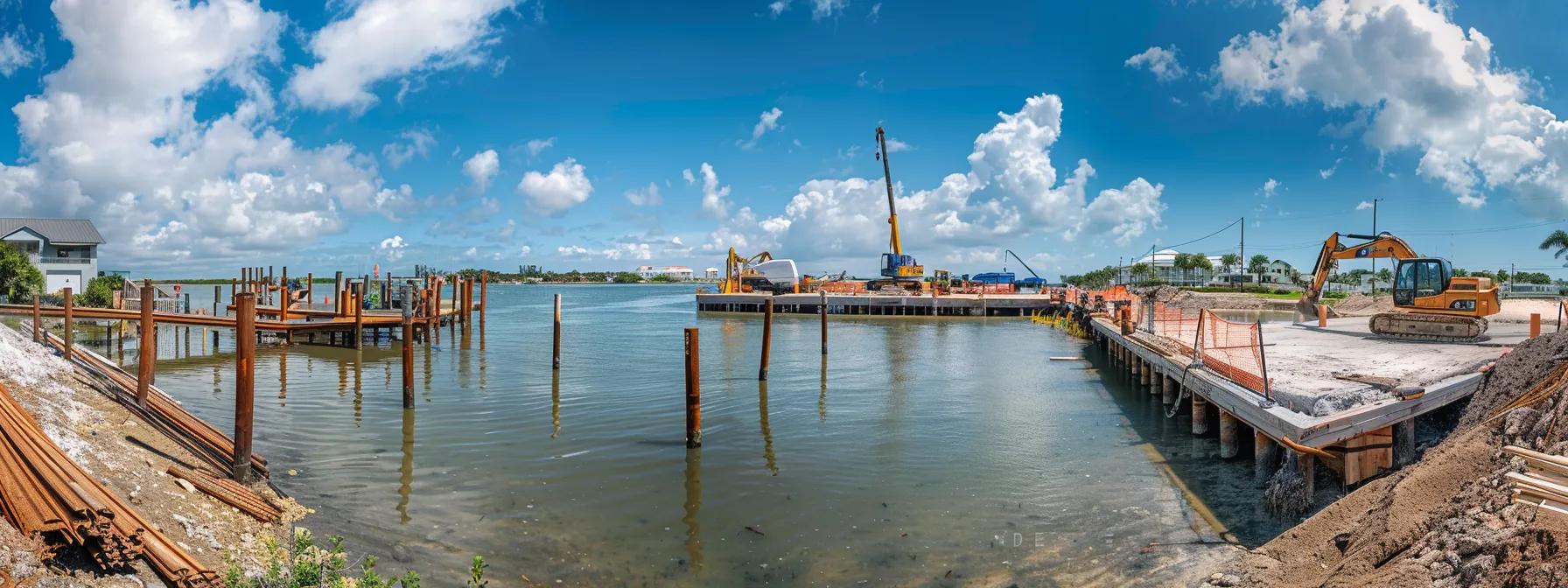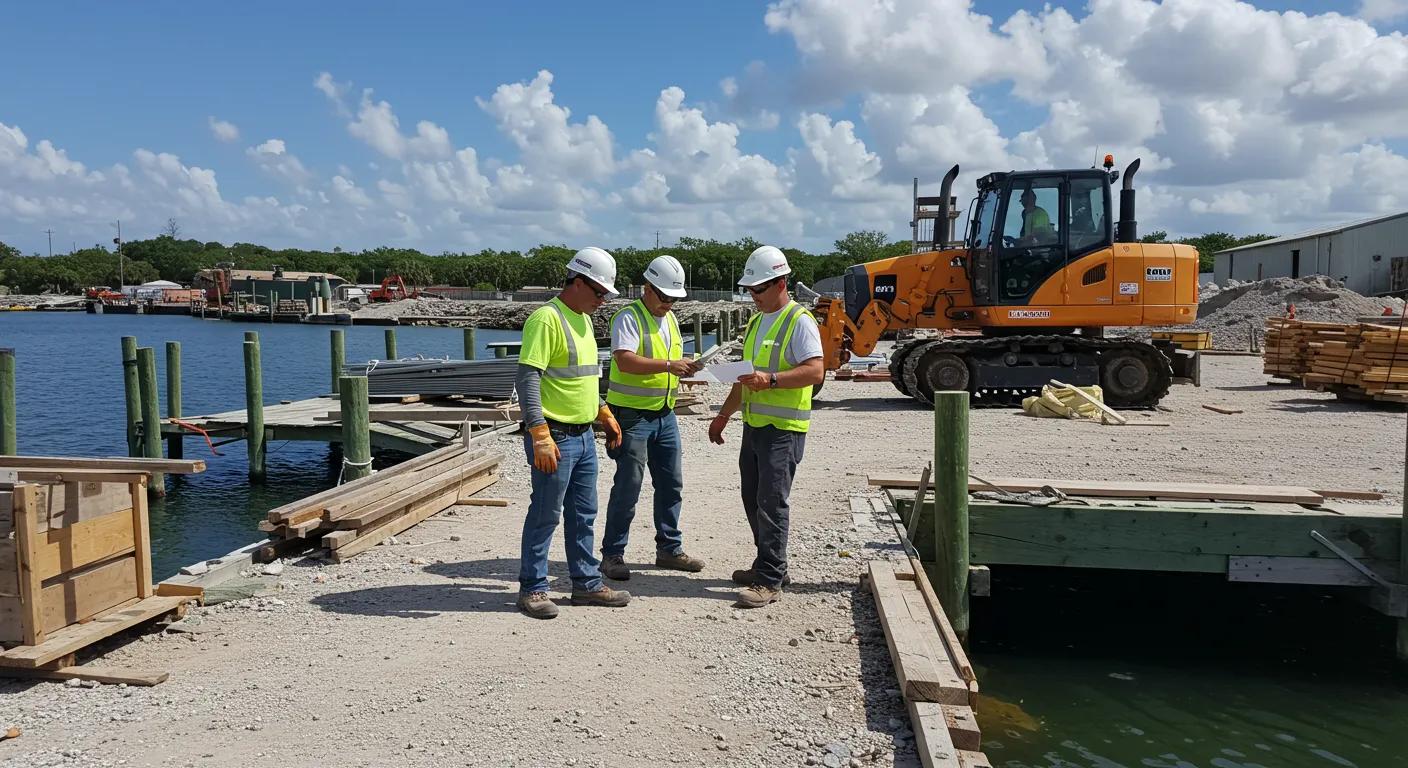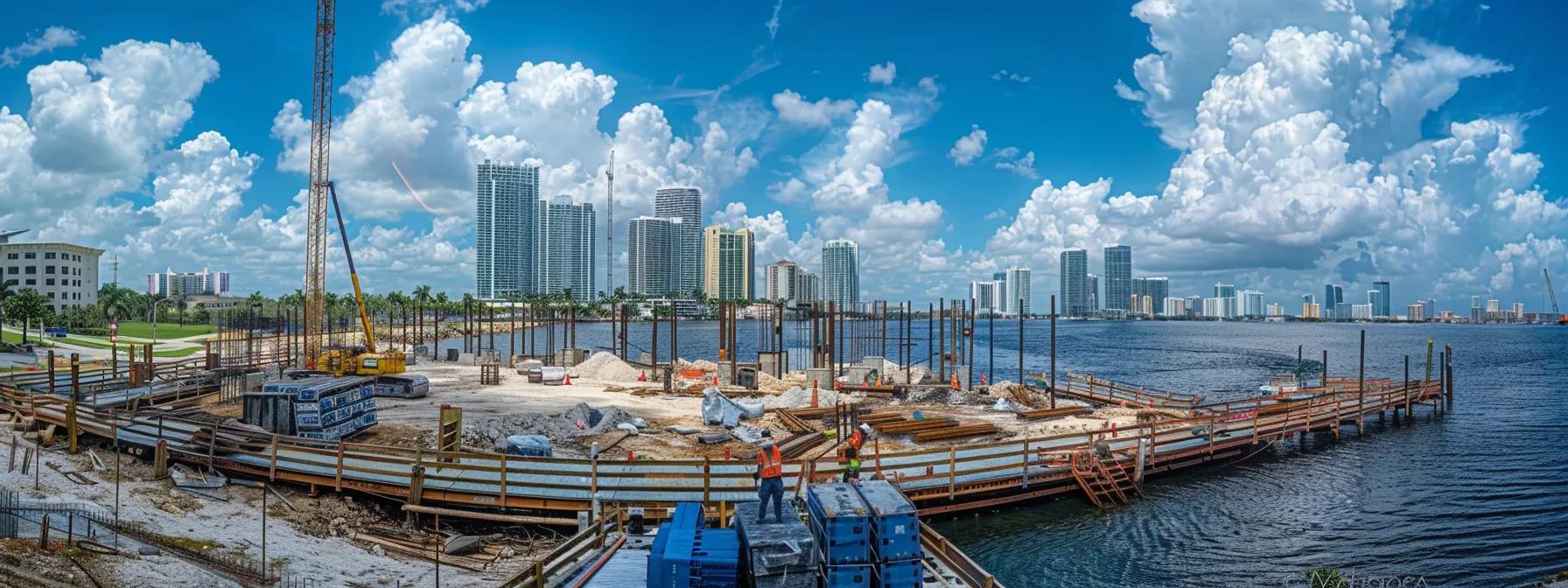Understanding Dock Construction Costs: Essential Factors That Impact Your Budget
When you plan to build a new dock for your waterfront property, understanding the diverse cost drivers is crucial. Dock construction expenses can seem unpredictable, but having a clear grasp of the influencing factors helps you plan effectively and manage your budget. In this article, you will learn about the key design elements, material choices, site conditions, permitting requirements, labor costs, and optional features that directly impact your overall dock construction expense. By exploring each aspect, you gain insights into how factors—from the type of dock you select to local environmental regulations—affect costs. This information is particularly important if you value sustainable construction practices and long-term durability. We also include tables and lists to help you compare materials and design choices that meet both your aesthetic and budgetary needs.
Transitioning now to a detailed breakdown, let’s learn what influences dock construction costs and how you can optimize design and material selection for functionality and visual appeal.
Key Design Elements Determining Dock Building Expenses
Understanding dock expenses begins with the design elements that set the project’s framework. The type of dock—floating, fixed, or a combination—plays a central role, as it must support uses such as boat storage, leisure, or utility. Each design type comes with its own price range because of differences in materials, engineering, and construction methods.
Selecting the Appropriate Dock Type for Your Needs and Budget
Choosing the right dock type impacts overall expense. For instance, a floating dock might offer flexibility and added safety for varying watercraft sizes, while fixed designs might be recommended for permanence. Your selection should balance performance with budget constraints, considering local conditions and engineering intensity.
How Dock Size and Dimensions Affect Construction Pricing
Dock size directly influences material usage and labor costs. Larger docks require more building material, extended construction time, and additional engineering assessments. Paying close attention to dimensions such as width, length, and load-bearing requirements is essential to meet regulatory standards and limit unexpected expenses.
The Influence of Structural Complexity on Final Dock Costs
The complexity of your dock—such as multiple levels, integrated boat lifts, or built-in seating—raises both labor and material costs. More intricate designs demand custom allowances, specialized fasteners, and reinforced support systems, often requiring professional engineering services that increase the overall cost.
Shoreline Connection Styles and Their Cost Implications
How your dock joins the shoreline affects both initial costs and long-term maintenance. Whether you choose fixed concrete pilings or a floating system with integrated mooring, secure anchors and quality hardware are vital for withstanding water flow and weather changes. The best option balances safety, utility, and aesthetics within your budget.
Water Depth and Its Role in Dock Design and Expense
Local water depth plays a significant role. Deep water may allow for a floating design, whereas shallow conditions might require a fixed structure with deeper anchoring systems. These factors can lead to notable price variations, so assessing water depth ensures safe and efficient dock performance over time.
Material Choices and Their Effect on New Dock Prices
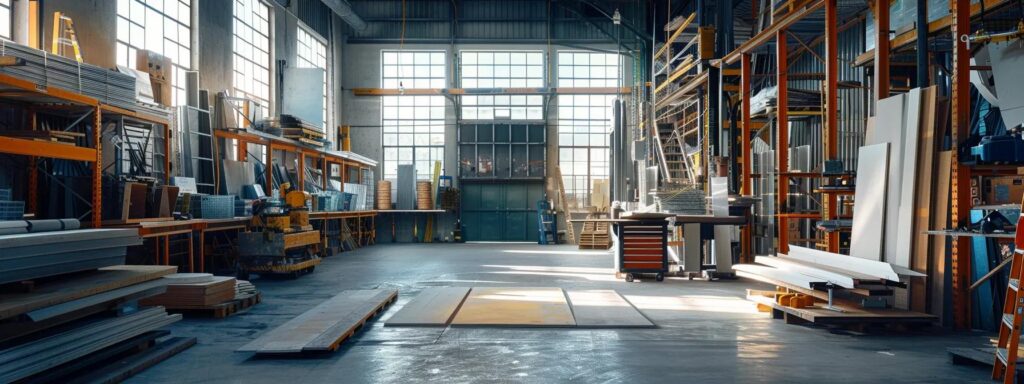
Selecting appropriate materials is key to controlling both upfront and long-term costs. Whether you choose traditional wood, composite, metal, or concrete, each material comes with unique characteristics, durability levels, and price points. Balancing these factors will help you achieve the ideal mix of cost and longevity.
Comparing Wood Varieties for Dock Construction Budgets
Wood is popular for its natural appearance and versatility. Common choices include cedar, treated pine, and redwood. Cedar is naturally resistant to rot and insects but is more expensive, while treated pine is budget-friendly and redwood offers durability along with a premium finish. Your choice should consider future upkeep and warranty coverage.
Evaluating Composite Decking for Durability and Price
Composite decking is gaining attention for its resistance to weathering, insects, and decay. Although its initial cost is higher than traditional wood, reduced maintenance requirements and extended longevity can justify the investment. Consider warranty duration, manufacturer reputation, and consumer reviews when evaluating composite options.
Assessing Aluminum and Other Metal Dock Material Costs
Metals like aluminum and steel are valued for strength and resistance to corrosion. An aluminum dock is lightweight and durable, while steel offers superior strength but requires protective coatings. Evaluating total installation and maintenance costs, including anti-corrosion treatments, is essential when considering metal construction.
Examining Concrete's Role in Dock Foundation Expenses
Concrete is critical for dock stability as it is used in pilings and footings. Costs depend on the required thickness, volume, and local labor rates. Precise measurements and professional evaluations are necessary to comply with building codes and ensure a stable foundation.
Fastener and Hardware Quality Impact on Long-Term Value
Often overlooked, high-quality fasteners and hardware (such as bolts, brackets, and corrosion-resistant screws) are vital for safety and durability. Using marine-rated components reduces the frequency of repairs and helps protect your investment over the long term.
Site Conditions That Shape Your Dock Project Budget
Site conditions can cause significant cost variations. Factors such as water body characteristics, seabed composition, shoreline accessibility, local climate, and environmental regulations all require careful assessment to choose an appropriate design and accurate cost estimate.
Analyzing Water Body Characteristics and Their Cost Impact
Water characteristics—like current strength, tidal patterns, and temperature—can necessitate robust anchoring systems or specialized floating mechanisms, thereby increasing costs. Detailed hydrological studies help in selecting a design that minimizes future maintenance issues.
Seabed Composition and Its Influence on Foundation Requirements
The seabed type (sandy, rocky, or clay-rich) determines the foundation approach. Sandy bottoms may permit simpler anchoring, whereas rocky or clayey substrates might require advanced piling techniques. Professional soil tests and surveys help choose the most economical foundation option.
Shoreline Accessibility and Its Effect on Labor and Material Delivery
Easy access to your site reduces costs associated with heavy machinery and material delivery. In contrast, remote locations may incur higher transportation and labor expenses. Coordinated scheduling and logistics management are crucial to keeping costs in check.
Local Climate Considerations in Dock Material and Design Selection
Local climate factors such as temperature fluctuations, humidity, and severe weather affect material performance. In harsh climates, materials resistant to corrosion and degradation—like aluminum or treated composites—are preferable. Adapting your design to prevent issues like thermal expansion helps maintain structural integrity.
Environmental Regulations Specific to Your Waterfront Property
Compliance with local, state, or federal regulations may require additional permits, ecological assessments, or specialized construction methods. Adhering to these standards prevents fines and delays while safeguarding your investment.
Permitting and Regulatory Hurdles Affecting Dock Construction Costs

Navigating permits and regulatory requirements is essential to managing costs. Permits, professional surveys, and local building codes add to upfront expenses but ensure safety, legality, and long-term durability.
Identifying Necessary Permits for Your Dock Building Project
Depending on your locality, permits such as zoning, environmental, and building permits are required. Working with a knowledgeable dock builder can streamline this process and prevent delays or fines from non-compliance.
The Cost of Professional Surveys and Engineering Reports
Surveys and reports—including hydrological and soil tests—are vital for defining the optimum dock design and foundation. Although these add to initial expenses, they mitigate the risk of later structural issues and regulatory fines.
Application Fees and Timeline Considerations for Budgeting
Permit application fees vary and are often non-refundable. Processing times can affect your construction timeline, so accurate budgeting and planning are essential to minimize delays.
Adherence to Local Zoning and Building Codes
Local zoning and building codes determine dock size, placement, and design. Compliance prevents legal issues and ensures high quality and safety, highlighting the need for expertise in local regulations.
Potential Financial Repercussions of Non-Compliance and How to Avoid Them
Failing to comply with regulations can result in fines, forced modifications, or even demolition. Early integration of regulatory factors into your planning helps avoid these costly repercussions.
Labor and Professional Services Contribution to Overall Dock Cost
Labor and professional expertise significantly impact your dock construction budget. Understanding local market rates and the scope of work involved enables you to make cost-effective choices without compromising quality.
Factors Influencing Marine Contractor Rates in Your Area
Contractor rates depend on project complexity, local market conditions, and reputation. Comparing hourly rates and fixed fees can help you secure a contractor who offers quality workmanship and safety assurances at a competitive price.
The Scope of Work and Its Direct Link to Labor Hours
The complexity of the project sets labor hours. Detailed project plans help break down costs and ensure there are no unexpected charges. This clarity aids in contract negotiations and realistic timeline planning.
Specialized Equipment Needs and Associated Rental Fees
Specialized equipment like excavators, cranes, or marine drills can significantly add to labor costs if required for extended periods. Contractors with in-house equipment or bundle deals can help reduce these rental fees.
Obtaining Multiple Quotes for Competitive Pricing
Securing multiple contractor quotes allows you to compare detailed estimates and negotiate the best balance of cost, experience, and quality, ensuring industry-standard pricing.
The Value of Experienced and Insured Dock Builders
Experienced, insured dock builders bring expertise that minimizes post-construction issues. Their familiarity with challenging site conditions and regulatory compliance often results in long-term savings by reducing repair and maintenance costs.
Optional Features and Customizations That Adjust Your New Dock Budget
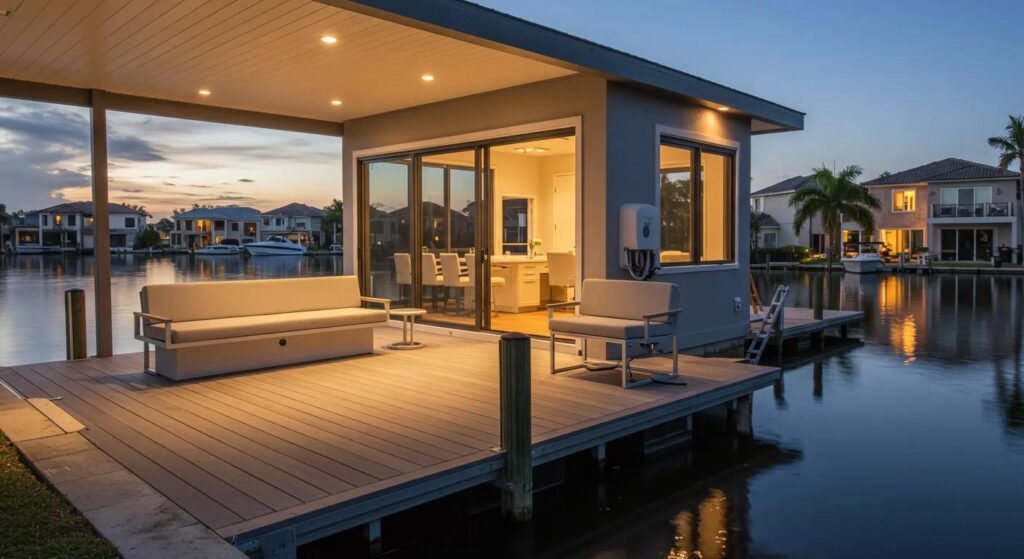
Optional features let you tailor your dock to specific needs and aesthetics, although they add extra costs. Enhancements such as boat lifts, electrical wiring, and built-in seating can boost functionality and curb appeal, but careful evaluation is needed to balance benefits against costs.
Incorporating Boat Lifts and Personal Watercraft Storage Costs
Boat lifts and storage systems improve functionality by offering secure storage and easy vessel access. They require additional structural support and engineering, which adds to overall cost, but the benefits often justify the expense.
Budgeting for Dock Accessories Like Ladders and Bumpers
Accessories—including ladders, bumpers, and railings—enhance safety and design. While they may represent a smaller expense, using high-quality, durable options is crucial to avoid compromising overall docksafety or aesthetics.
Electrical Wiring for Lighting and Power Outlets Pricing
Integrating electrical systems increases functionality for activities on the dock. Costs cover both materials and specialized labor for installation to meet electrical codes. Energy-efficient options such as LED lighting and proper waterproofing help balance performance with price.
Built-in Seating and Storage Solutions and Their Price Points
Custom built-in seating and storage transform your dock into an extension of your living space. Although these features require specialized design and increased labor costs, they enhance convenience and overall visual appeal.
Aesthetic Enhancements and Their Impact on Dock Project Expenses
Additional aesthetic enhancements—like decorative lighting, artistic railings, and custom paint treatments—can significantly improve the dock’s visual impact and property value. It is important to balance these enhancements with overall budget constraints.
Table: Comparison of Dock Material Options
Before diving into the final sections, here is a table summarizing key attributes of popular dock construction materials:
| Material | Average Cost per Sq Ft | Durability (Years) | Maintenance Frequency | Notable Benefit |
|---|---|---|---|---|
| Cedar | $12 – $18 | 15-20 | Low | Natural resistance to decay |
| Treated Pine | $8 – $12 | 10-15 | Moderate | Budget-friendly option |
| Composite Decking | $20 – $30 | 25-30 | Minimal | Low maintenance, high durability |
| Aluminum | $25 – $35 | 30+ | Low | Lightweight, corrosion-resistant |
| Concrete | $30 – $45 | 40+ | Minimal | Superior structural stability |
This table provides a quick reference to compare initial costs, lifespan, and benefits of various materials, helping you make an educated decision that balances performance with budget.
Following the table, consider how material selection ties directly into long-term efficiency and overall dock satisfaction.
Final Thoughts
Your journey through dock construction costs reveals that every component—from design elements and material choices to site conditions and optional upgrades—plays a vital role in determining the final price. By understanding how each factor affects upfront and ongoing expenses, you can make informed decisions that achieve safety, durability, and aesthetic appeal without exceeding your budget. With these insights, you set a strong foundation for long-term value and enhanced waterfront living. Now is the time to consult with professional dock builders who can turn these insights into a cost-effective, high-quality construction project.
Frequently Asked Questions
Q: How do dockdesign elements influence construction costs? A: Dock design elements such as the type, size, and structural complexity directly determine labor, material, and engineering expenses. For example, larger docks with integrated features require additional materials and specialized labor, resulting in higher overall costs while ensuring increased durability and functionality.
Q: What are the primary material options for dock construction? A: The primary materials include wood varieties (cedar, treated pine, redwood), composite decking, metal options like aluminum or steel, and concrete foundations. Each material varies in durability, maintenance needs, and cost, so your choice should align with your project requirements and long-term expectations.
Q: Why are site conditions important for budgeting a dockproject? A: Site conditions such as water body characteristics, seabed composition, shoreline accessibility, and local climate significantly impact design and foundation requirements. These factors dictate necessary engineering solutions, affecting both labor and material costs while ensuring dock stability.
Q: How do permitting and regulatory hurdles affect dock constructionexpenses? A: Permitting and regulatory requirements involve additional fees, professional surveys, and adherence to local building codes. These factors can extend project timelines and add to upfront costs, but they are essential for avoiding fines and ensuring the safety and legality of your dock.
Q: What optional features can increase the cost of a dockproject? A: Optional features include boat lifts, personal watercraft storage, electrical wiring for lighting and power outlets, built-in seating, and custom aesthetic enhancements. While these additions boost functionality and curb appeal, they require extra structural support and labor, which increases initial costs.
Q: How can comparing multiple contractor quotes help in managing dock constructioncosts? A: Comparing quotes from different marine contractors helps you identify competitive pricing and receive detailed line-item estimates. This process not only reveals industry-standard rates but also enables you to negotiate and choose a contractor who offers a balanced combination of cost, experience, and quality work.
Q: Are there long-term benefits to investing in higher-quality dockmaterials and labor? A: Yes, investing in high-quality materials and experienced, insured professionals improves your dock’s durability, safety, and overall performance, reducing future maintenance and repair costs. This approach leads to long-term savings and a better return on your initial investment while ensuring a stable, attractive waterfront structure.

